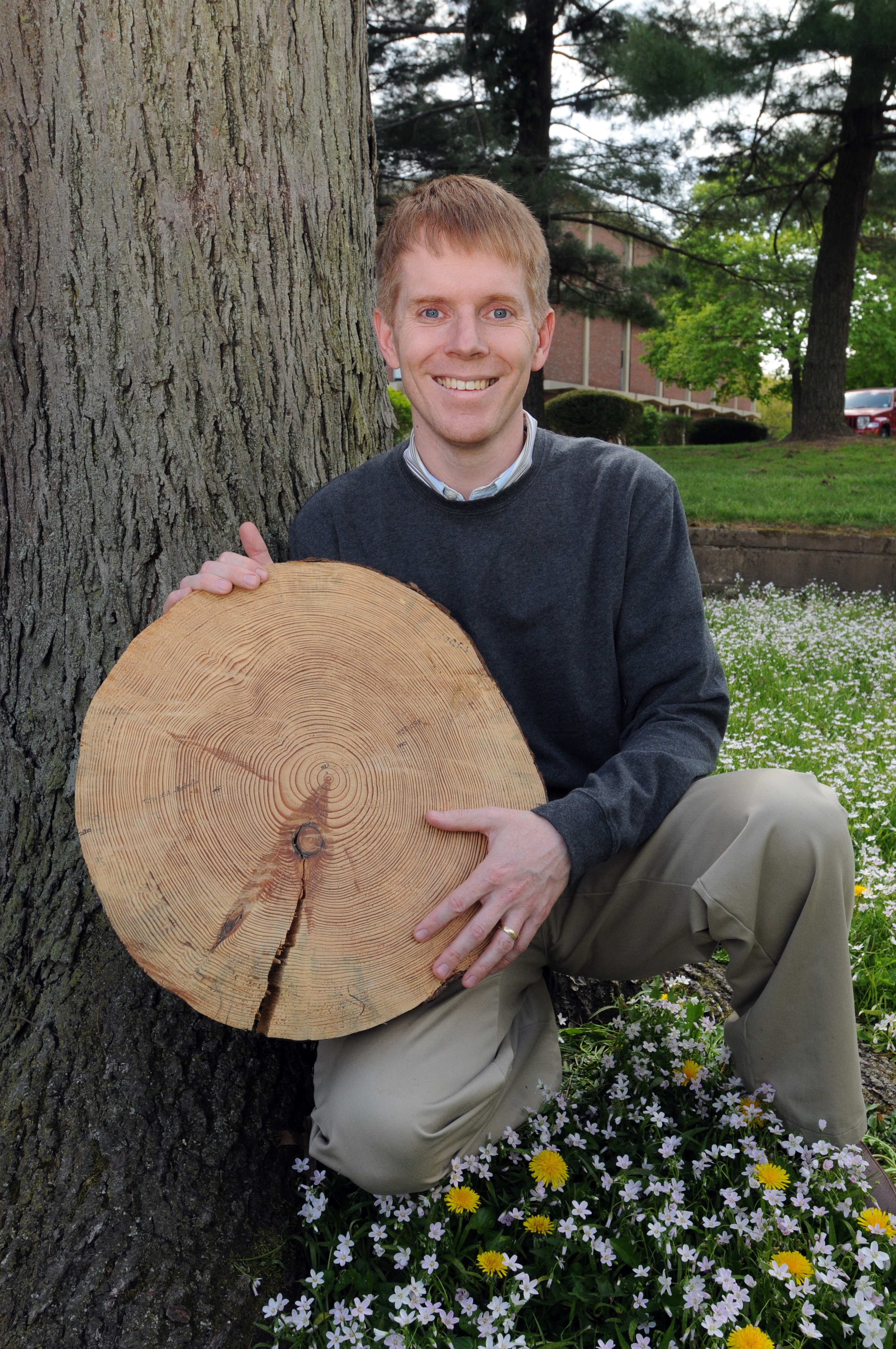Tuesday, Jul 20, 2010
Dr. Daniel Druckenbrod, assistant professor of Environmental Sciences, says trees silently speak their stories.
by Sean Ramsden
Hollywood actors are known to be cagey about their ages, but trees know no such luxury. In fact, you would be hard-pressed to find anything in nature as sincere as an aging oak tree, whose true age can be determined to within a year. It’s all a matter of dendrochronology, the practice of tree-ring dating, according to Dr. Daniel Druckenbrod, whose study of forests and their changing environments is the subject of his research.
Druckenbrod, an assistant professor of Environmental Sciences who joined the faculty at Rider for the fall 2009 semester, is mindful of certain celebrities, but in his case, they tend more toward George Washington than George Clooney. Druckenbrod’s most recent research is set at Mount Vernon plantation, home of our nation’s first president, and at Thomas Jefferson’s Monticello, both in Virginia, where he can better understand the dynamics of the forests on these sites since their 18-century heyday.
Though he’s not a historian in the academic sense, Druckenbrod certainly has an appreciation for the “roots” of the United States, and eventually figured out how to splice his interests in the environment and history. “It wasn’t until graduate school that I realized I could study my own backyard to answer some questions about this region,” he explained, viewing the past through a scientific lens. “I had the chance to study forest change at some great centers of American history, but look at it from a scientific perspective.”
By examining the trees at places like James Madison’s Montpelier, Druckenbrod can glean historical evidence from the renowned plantations, such as when planting fields were relinquished and returned to nature. But he can also study weather and climate trends over the past two centuries, all bits of information that reveal themselves through individual trees and of growth patterns across sections of forest.
“Tree rings are very approachable. Everyone counted tree rings as kids, but you can answer lots of things besides ‘how old,’” said Druckenbrod, who earned a Ph.D. in Environmental Science from the University of Virginia in 2003. “Anything that effects growth will be recorded in those rings, like summer droughts or how much light a tree has received. Even things like hurricanes or selective loggings events all have an impact on the surrounding area.”
A favorable environment also helped draw Druckenbrod to Rider. “I was really attracted to the fact that Rider has interdisciplinary majors, where I can teach students in a research setting,” he explained, adding that his students on the Lawrenceville campus have already proposed some rather intriguing research subjects to him. Other times, they will act on his thoughts. “I’m happy to give them ideas. I like undergraduate research to be meaningful.”
At Rider, it’s a teaching philosophy that “rings” true.

